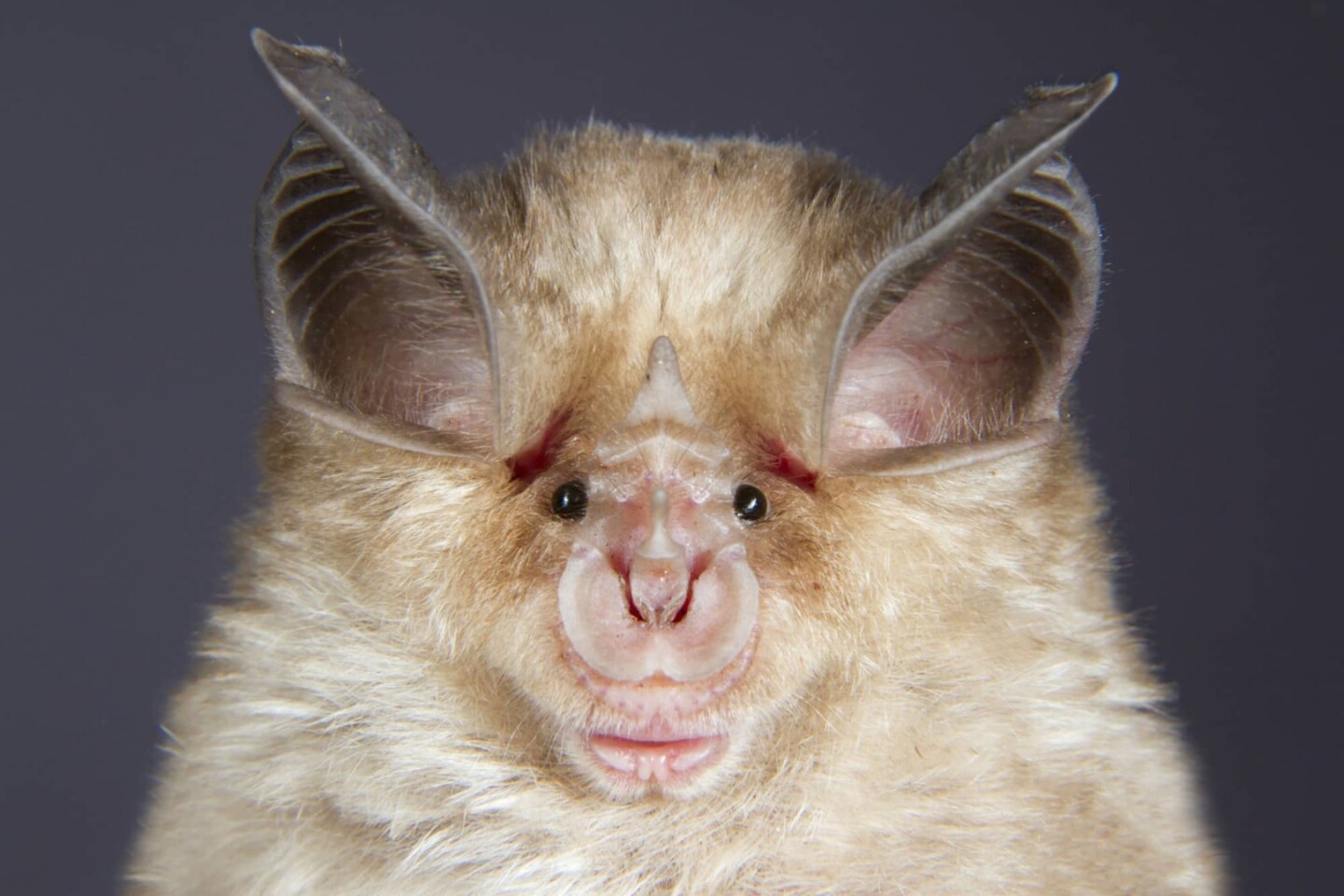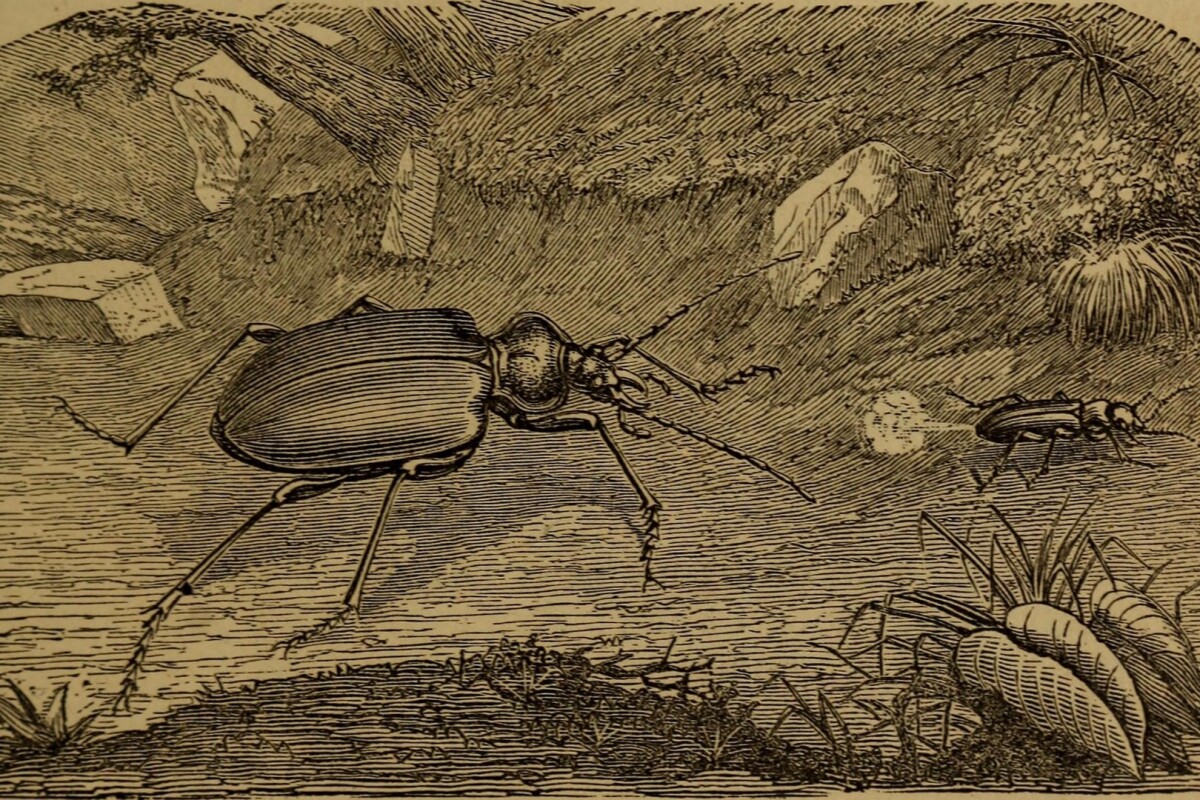The term biomimicry will be familiar to longtime readers. Science and technology which imitates phenomena from the living natural world have featured in these pages from the beginning. Here, New Atlas takes a look at the animal kingdom (and beyond) to find some of the strangest and most highly-evolved fauna to inspire science and technology.

Name: Mantis shrimp
Suborder: Unipeltata (some 450 known species)
Length: Up to 40 cm (16 in) — occasionally larger
Modus operandi: Predating the hell out of worms, crabs, fish, shrimp and each other
Freaky fact: Think twice before adopting one. Mantis shrimp will very likely eat everything else in your aquarium. Larger shrimp have even been known to break the glass.
Inspiration: Mantis shrimp may be awesomely specialized hunters, but they've inspired scientists in diverse fields. Their highly evolved eyes have 16 color receptors (to our three), and mantis shrimp roll them to see polarized light — a trick that could potentially be useful for underwater robots, improving sunglasses, or perhaps even help in detecting cancer. Its literally bullet-fast dactyl club, meanwhile, could help strengthen everything from body armor to airplanes. This brutal weapon withstands massive impacts with no damage thanks to tiny shock absorbers on its surface and complex herringbone and helical structures which prevent damage.

Name: Pangolin
Family: Manidae (eight species)
Length: Up to a meter (40 in)
Modus operandi: Wandering around alone, at night, looking for ants.
Freaky fact: Pangolin are the only known animal with keratin scales — the same thing our finger nails are composed of.
Inspiration: Those same scales overlap a bit like the tiles on a roof, while still allowing the pangolin the flexibility to roll into a ball. It's thought that this behavior could inform protective surfaces from packaging to roofs, and has already inspired real-world products like the Pangolin backpack, which has similar overlapping surfaces (and which closes with a magnet instead of a zip). The Pangolin was also the inspiration for Golem's futuristic retractable Alpha helmet.

Name: Clingfish
Family: Gobiesocidae
Length: Most species are under 7 cm(3 in)
Modus operandi: Getting very attached to rocks, leaves, algae and even other fish.
Freaky fact: The Northern clingfish is clingy enough to lift 150 times its bodyweight.
Inspiration: It's the clingfish's highly adapted pelvic fins that grant its clinginess to even rough slippery surfaces. This is thanks to layers of minute hair-like structures which can get into otherwise inaccessible nooks. And crucially it's an ability that the clingfish can turn on and off as needed. It's hoped that our understanding of the clingfish could lead to developments in keyhole surgery, attaching soap holders to tiled walls, or even securing trackers to whales.
Name: Bombardier beetle
Family: Carabidae
Length: Under 2 cm (0.8 in)
Modus operandi: Squirting noxious spray from their rear end to ward off — or even kill — attacking insects.
Freaky fact: Even the larvae can be carnivorous.
Inspiration: The spray comes about as a result of a reaction between two compounds, hydroquinone and hydrogen peroxide, stored separately in the beetle's abdomen. Though the mixture is almost at boiling point, the bombardier beetle seems to suffer no ill effects. Scientists used high-speed X-ray imaging to learn that the beetle does this by staging the reaction in pulses, allowing the chamber where the reaction occurs time to cool. It's thought this could lead to further insights into propulsion systems.

Name: Horseshoe bat
Genus: Rhinolophus
Length: Up to 14 cm (5.5 in)
Modus operandi: Catching insects mid-flight using echo location and supremely agile flight.
Freaky fact: Chinese horseshoe bats are thought to be the origin of the SARS outbreaks between 2002 and 2004.
Inspiration: Horseshoe bats' highly-evolved noses make them the masters of echolocation in the bat world. Their "noseleaves" allow them to make tiny variations in the frequencies they emit allowing for highly-specialized locating, including detecting the wing movements of moths. Their ears are similarly adaptable. Perhaps unsurprisingly, research into horseshoe bats could lead to improvements in sonar, potentially using similarly dynamic emitters and detectors.








